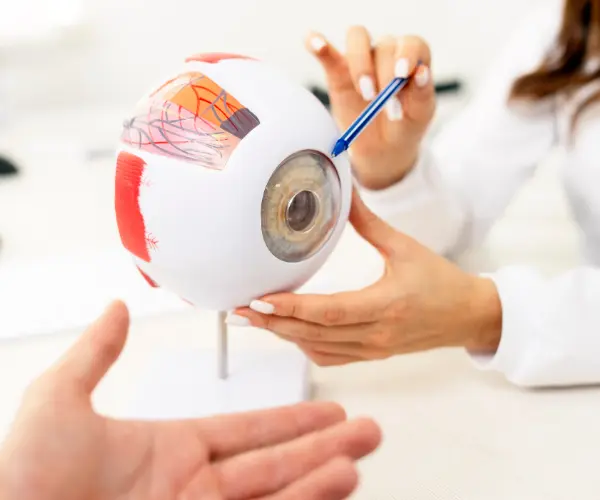Would you like to get rid of your glasses or contact lenses completely, but your corneal structure isn't suitable for LASIK? Then PRK treatment might be one of the best options for you! PRK is one of the oldest and most reliable types of laser vision correction procedures. Especially for individuals with thin corneas or those working in professions with a high risk of eye trauma, PRK offers a permanent and effective solution. In this article, you'll find everything you need to know about what PRK treatment is, who it’s suitable for, how it’s done, and its advantages.
What is PRK Treatment?
PRK (Photorefractive Keratectomy) is a laser eye surgery based on removing a thin layer from the surface of the cornea to correct refractive errors using a laser. During this procedure, the top layer of the cornea (epithelium) is removed, and the underlying corneal tissue is reshaped with an excimer laser. The epithelium then regenerates over time. It is effective in treating myopia, hyperopia, and astigmatism, and is especially preferred as an alternative to LASIK for individuals with thin corneas.
Who is PRK Suitable For?
-
Individuals over 18 whose vision prescription has been stable for at least 1 year
-
Those with thin corneas (not suitable for LASIK)
-
People who do not wish to wear glasses or contact lenses
-
Individuals with mild to moderate myopia, hyperopia, or astigmatism
-
People working in high-impact professions (military, athletes, police, etc.)
Who is PRK Not Suitable For?
-
Individuals with corneal diseases like corneal dystrophy or keratoconus
-
Those with retinal disorders
-
Pregnant or breastfeeding women
-
Individuals under 18 or with unstable vision prescription
-
Those with severe dry eyes
How is PRK Performed?
PRK treatment usually takes about 15–20 minutes in total for both eyes.
The procedure includes the following steps:
-
Comprehensive eye exam: Corneal thickness, prescription, and overall eye health are evaluated
-
Anesthesia: Local anesthesia is applied with eye drops; the procedure is painless
-
Epithelium removal: The epithelial layer on the corneal surface is gently removed
-
Laser application: The corneal shape is reshaped with an excimer laser
-
Protective contact lens: A temporary lens is placed to protect the eye surface
The epithelium regenerates within 3–5 days. Clear vision typically begins within 1–2 weeks, with full recovery taking several weeks.
Advantages of PRK Treatment
-
Can be safely applied to individuals with thin corneas
-
No corneal flap is created, maintaining structural integrity
-
Safer for high-trauma risk professions
-
Eliminates the need for glasses or contact lenses
-
High success rate when applied to suitable candidates
Post-PRK Care Instructions
-
Mild discomfort, tearing, and light sensitivity may occur in the first few days
-
Use prescribed eye drops regularly as instructed by your doctor
-
Avoid rubbing the eyes and staying in dusty environments
-
Avoid heavy exercise and swimming for the first week
-
Use sunglasses to protect your eyes from UV rays
Is PRK a Permanent Treatment?
Yes! PRK permanently corrects refractive errors. However, age-related near vision problems (presbyopia) may develop over time. This reflects the natural aging process, not the effectiveness of PRK.
Differences Between PRK and LASIK
| Feature | PRK Treatment | LASIK Treatment |
|---|---|---|
| Corneal incision | No (epithelium is removed) | Yes (corneal flap is created) |
| Healing time | Slower (1–2 weeks) | Faster (1–2 days) |
| Suitable patient profile | Thin corneas, high-risk professions | Thicker corneas, those wanting quick recovery |
| Structural eye integrity | Higher | Flap sensitivity may occur |
| Post-trauma risk | Lower | Risk of flap displacement |









